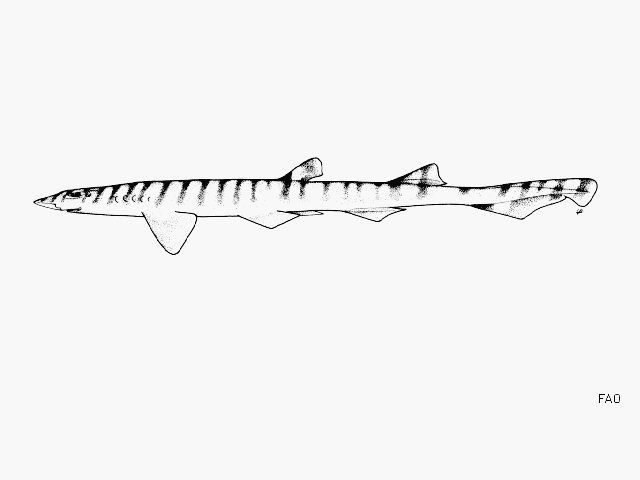| Pentanchidae (Deepwater catsharks) |
| 31.5 cm TL (male/unsexed); 36.8 cm TL (female) |
|
demersal; marine; depth range 54 - 187 m |
| Western Indian Ocean: Somalia (Indian Ocean coast) and India (Arabian Sea), offshore on continental slope (Ref. 86593). |
|
A small shark with numerous (>20) vertical stripes on the body without dark spots, snout tip knoblike but not prominently upturned. Eyes in adults 12–13 times in distance from snout to first dorsal origin. Anterior nasal flaps sub triangular. Gills dorsolaterally placed and elevated above the mouth level. First dorsal-fin origin about opposite pelvic-fin insertion. Light brown above with pale ventral side, dark brown cross bands on the body (Ref. 86593). |
| Found on the continental shelves, (Ref. 244), on or near the bottom (Ref. 30573). Attains a maximum size of 37.0 cm TL; female of 36.8 cm TL was gravid and contained eight egg cases, four in each uterus (Ref. 86593). Feeds on shrimps. Collection by deep-sea shrimp trawlers may indicate that the species could have a wider depth distribution, possibly down to 280 m (Ref. 86593). Not utilized at present (Ref. 244). |
|
Data deficient (DD); Date assessed: 09 February 2017 Ref. (130435)
|
| harmless |
Source and more info: www.fishbase.org. For personal, classroom, and other internal use only. Not for publication.

